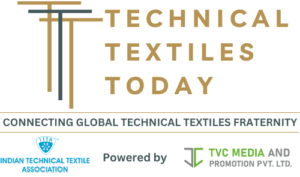Aquafil has reached a significant milestone in sustainable textile innovation by launching its first demonstration plant in Slovenia dedicated to the chemical separation of elastic fibers from polyamide (nylon). This cutting-edge initiative represents a major leap forward in tackling one of the textile industry’s most persistent challenges—recycling blended fabrics. The new technology opens up transformative possibilities, enabling the efficient separation of materials like elastane from nylon, commonly found in garments such as swimwear and activewear.
The plant is designed as a testing and optimization platform, with the ultimate goal of defining the parameters for scaling up to a full industrial facility. This move reinforces Aquafil’s longstanding commitment to circularity and responsible manufacturing practices. As part of the initiative, the company has built a strategic network of stakeholders to create a reliable supply chain of post-consumer and post-industrial textile waste. This network ensures a continuous flow of materials that can be reprocessed rather than discarded, contributing to a more sustainable and resilient recycling ecosystem.
The journey to this breakthrough began in 2013, when Aquafil initiated a joint research project with Georgia Tech University, focusing on solving the complex challenge of separating synthetic fiber blends. Although initial attempts at industrialization faced hurdles, Aquafil’s R&D team continued refining the process, leading to the filing of a new patent in 2022 for a significantly improved technology. With the demonstration plant now operational, the company has proven that what was once only viable in laboratory conditions can now be achieved on a semi-industrial scale.

This innovation addresses one of the toughest barriers in textile recycling—the presence of multiple fiber types in a single fabric, which has historically rendered recycling ineffective for many materials. As Giulio Bonazzi, CEO of Aquafil, noted, the ability to successfully separate elastic fibers from nylon represents a game-changing advancement. It offers a solution for recycling complex textile waste streams that would otherwise end up in landfills or incinerators.
All nylon recovered through this process will be sent to the Econyl® regeneration facility, where it will be transformed into regenerated nylon suitable for new textile applications. This approach not only diverts waste from the environment but also reduces the industry’s reliance on virgin raw materials, making a measurable impact on sustainability.
Bonazzi emphasized that this innovation is a reflection of Aquafil’s pioneering role in the global transition toward circular fashion. By investing in breakthrough technologies that merge science, sustainability, and industrial practicality, Aquafil demonstrates how innovation can provide real solutions to environmental challenges. The project also serves as a powerful example of how waste can be transformed into a valuable resource, shaping a greener future for the textile industry.
